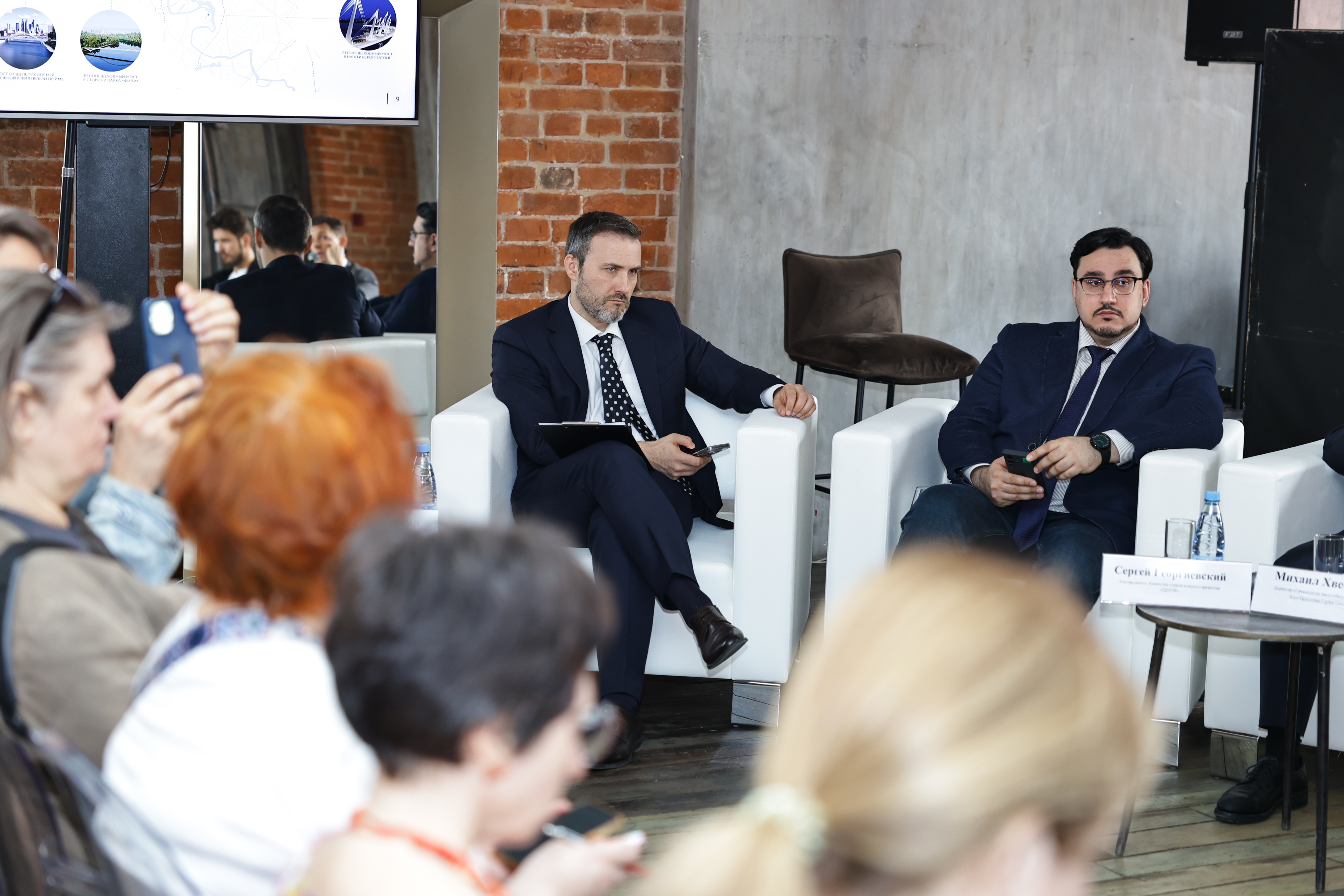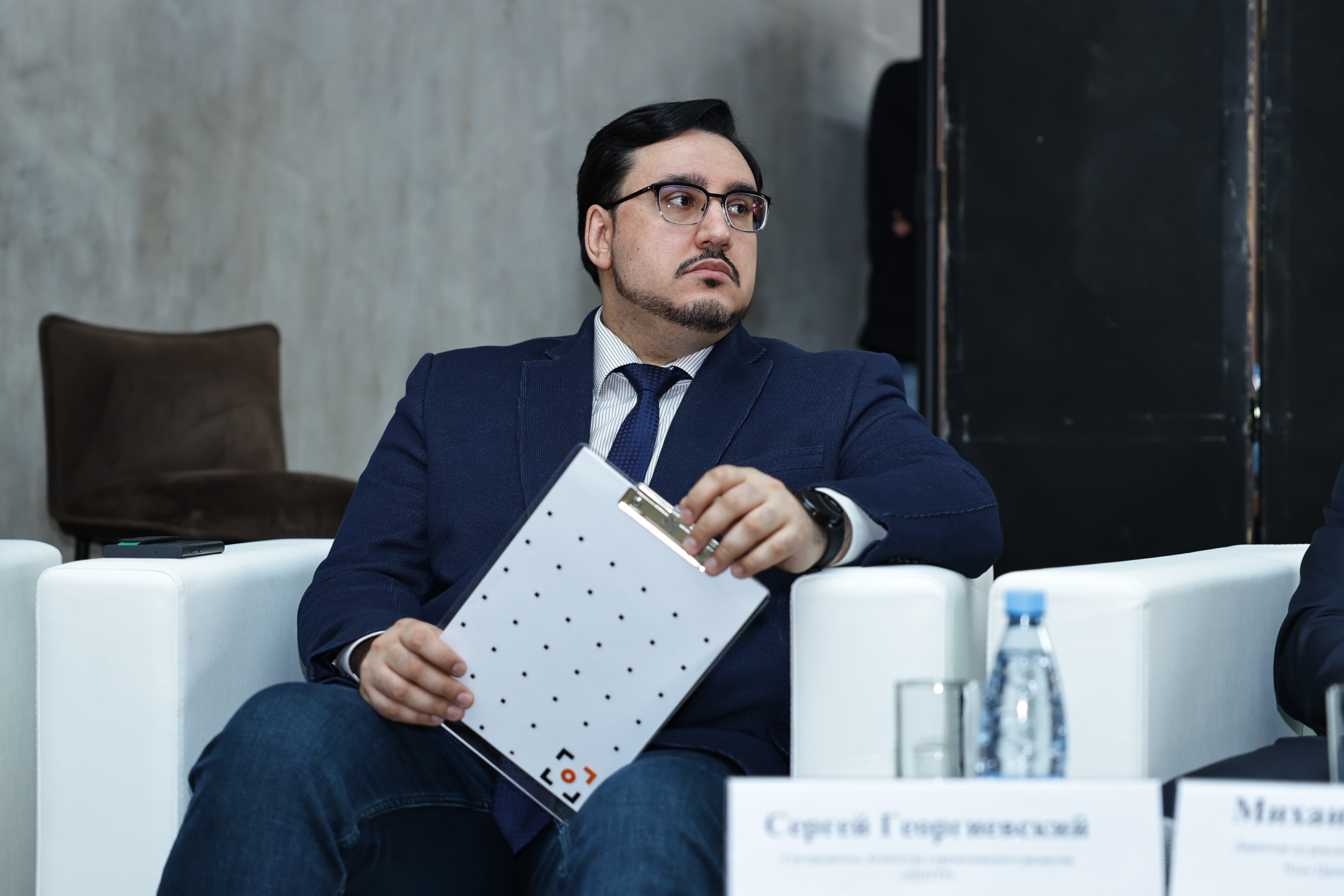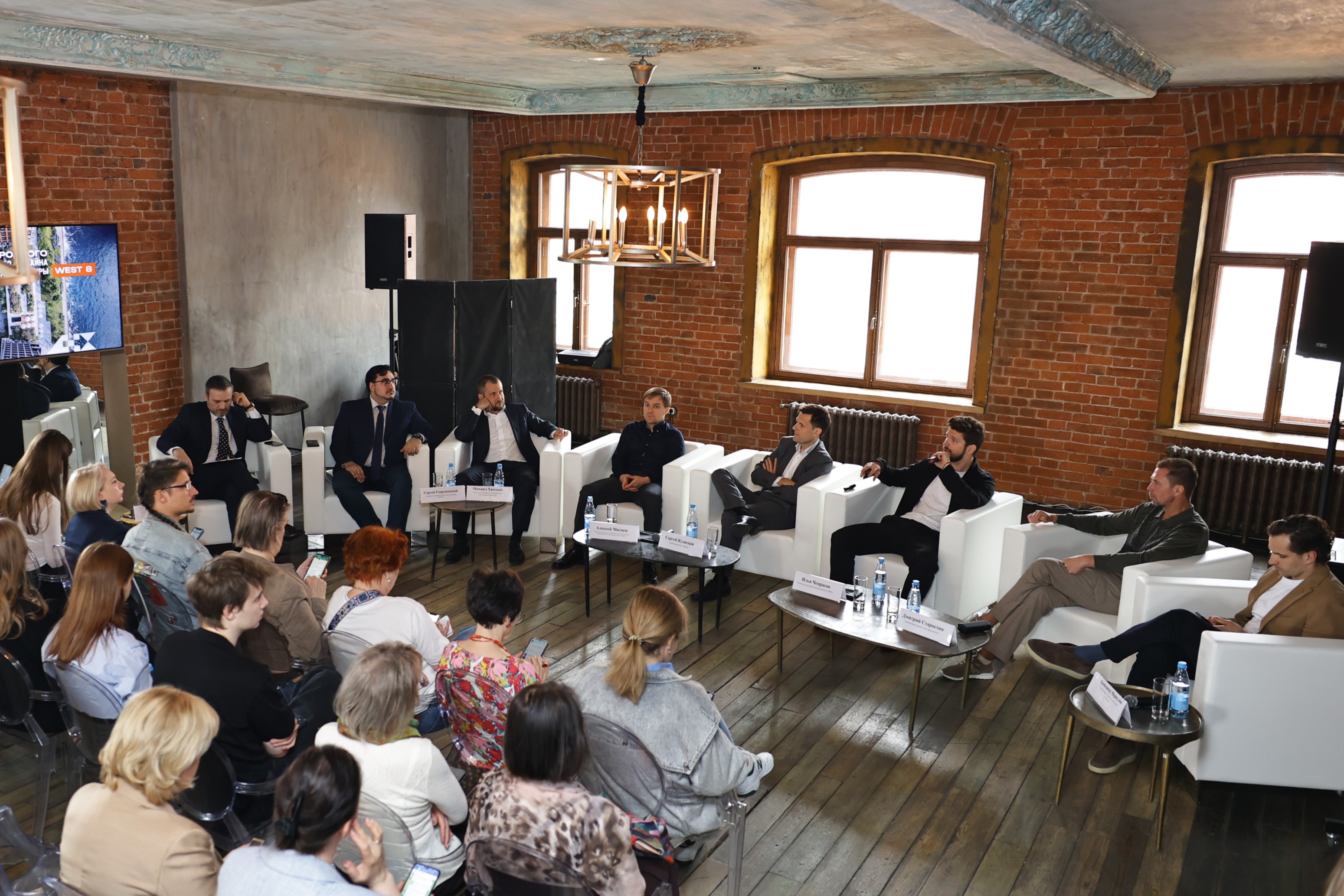The round table "Embankments without borders — how Moscow has been developing coastal territories for 10 years" was held
Sergey Georgievsky, co-founder of the Agency for Strategic Development “CENTER” , took part in the round table "Embankments without Borders - how Moscow has been developing coastal territories for 10 years", which took place on April 11 at the Moscow Imperial Yacht Club.
This year marks the 10th anniversary of the capital implementing a large-scale project - the development of territories adjacent to the Moskva River. During this time, more than 80 kilometers of embankments have been put in order. In the coming years, 64 more kilometers of new embankments and 40 community centers will appear in Moscow.
The event was also attended by:
• Sergey Kuznetsov, Chief Architect of Moscow;
• Alexey Mityaev, Deputy Head of the Department of Transport and Development of Road Transport Infrastructure of the City of Moscow;
• Dmitry Starostin, Managing Partner of Aeon Development;
• Ilya Cheprasov, head of the developer of city blocks FORMA;
• Kirill Ignakhin, CEO of Level Group;
• Mikhail Khvesko, Director of Large-scale projects, Member of the Management Board of Capital Group.
During the event, the speakers discussed the principles that are used to create a master plan for locations near the water, allowing coastal territories to become new business, public and cultural centers, world practices of industrial zone redevelopment and embankment improvement, design features near the water and the creation of water infrastructure.
Sergey Kuznetsov, chief architect of Moscow, noted: "Now many developers are confident that investments in infrastructure not only increase the value of lots, but also are a contribution to the urban environment, a kind of social capital. It depends on us what kind of Moscow we will pass on to our descendants and I want them to appreciate our achievements."
Sergey Georgievsky spoke at the Round Table about Moscow and global trends in the development of coastal territories.
"For a long time, most of the coastline of the Moskva River - almost 200 kilometers — was either not landscaped or inaccessible to citizens. Over the years, the city authorities have put 36 embankments in order. Thus, the coastal territories have received a new, ceremonial function: the embankments in the capital have become walking areas, the river is included in urban life, the view of the water has turned into a serious "selling" argument. The capital uses and often forms the best world experience in the redevelopment of coastal areas: connectivity and a variety of scenarios — so, in the park of the 850th anniversary of Moscow, a continuous pedestrian zone appeared - more than 16 kilometers and bike paths that form a single walking route, a new visual perception, for example, "city balconies" on the Raushskaya embankment with a unique laconic a design that allows you to look at the embankment from a new angle," said Sergey Georgievsky.



Photo: Moscow Architecture Press Service